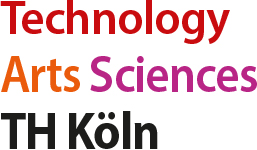Für überdurchschnittlich motivierte Studiernede besteht die Möglichkeit eines Forschungspraktikums an der University of East London. Einen Ausschnitt von möglichen Themen hat Christian Gessner von seinem Aufenthalt dort mitgebracht:
Google Data Fusion and Cloud Computing The purpose of the project is to investigate how new technologies such as Google Data Fusion a cloud-based data management services can be exploited to support data management, integration and collaboration in the cloud. Google Fusion Tables represents an initial answer to the question of how data management functionality that is focussed on enabling new users and applications would look in today’s computing environment. The focus of this project will be on investigating seamless Web integration, with emphasis on ease of use, and incentives for data sharing, that underlie the design of Fusion Tables. Example, support for data acquisition, collaboration, visualization, and Web-publishing.
Semantic-Based Safety Model for Alzheimer Patients Patients’ suffering from early stages of Alzheimer requires continuous monitoring to ensure usage safety concerning their everyday activities of home based products. Most of the current research in this domain is focused on activity models and how to asset Alzheimer patients with their day-to-day activities. Little research focuses on developing safety mechanisms to be associated with such patient activities. In this project, we are aiming to develop a semantic safety model based on sensory networks that can identify dangerous patient activities by exploiting personalised knowledge of previous activities and recommend taking the safest course of actions accordingly. ** This project builds on an existing project which started based on current collaboration with Cologne University of Applied Sciences
Semantic Link Browser Semantic Link (SL) browser is a semantic Web model using semantically empowered links— the natural extension of the hyperlink-based Web. The aim of this project is to implement a SL-Builder tool that enables definition, modification and verification of, as well as access to SL browsing. The SL-Builder can convert a SL definition into descriptions for cross-platform information exchange. The SL-Browser is used to visualise the SL and carry out two types of reasoning in browsing time: small granularity reasoning by sequencing SLs and large granularity reasoning by matching semantic views of SLN. As a result and with the help of the reasoning mechanism, the browser can recommend the content that is semantically relevant to the current browsing semantics and context, and it enables users to insinuate the final content of a SL chain.
Semantic Model for Cybercrime Safety Recommendation Actions The purpose of this project is to build a semantic model which classifies cybercrimes into hierarchical levels that categorises the crimes into their types. The model should include semantics related to the different crimes to allow them to be automatically classified. Safety recommendations are also associated with the model using semantic relationships. The implementation of the model will result in creating a knowledge base system (Ontology) for Cybercrime Safety Recommendation Actions. This project builds on an existing MSc project currently being undertaken at the University East of London (UEL).
Data Integration in a Multi-Information Server Environment In a dataspace platform interschema semantic knowledge can only be detected if both the structural and semantic properties of the schemas of the cooperating servers are made explicit and formally represented in a way that a computer system can process. Unfortunately, very often there is lack of such knowledge and the underlying individual Information Servers (ISs) schemas, being semantically weak as a consequence of the limited expressiveness of traditional data models, do not help the acquisition of this knowledge. The solution to overcome this limitation is primarily to upgrade the semantic level of the IS local schemas through a semantic enrichment process by augmenting the local schemas of ISs in a dataspace to a semantically enriched schema models, then to use these models in detecting and representing correspondences between classes belonging to different schemas. In this project we investigate the feasibility of using Ontology Web Language (OWL) based domain ontologies both for building semantically rich schema models, and for expressing interschema knowledge and reasoning about it in a dataspace framework.
Searching for repetitive genetic units Many gene sequences are made up of repeating gene sequences. Finding these units is often key in the discovery of related proteins across diverse organisms. In this project we are aiming to develop a programme to identify repeating units within either user uploaded genetic sequence or sequence files available on the web.
Predicting structure from sequence Proteins, the building blocks of life, are made up of strings of amino-acids that assume secondary and tertiary structures. This project would aim to look at the relationship between the sequence and structure of know proteins, with a view to producing a system of predicting the structure of proteins for which only the sequence is known.
Developing the virtual lab This project would be to develop an interactive virtual laboratory in which students can perform complex laboratory protocols online.
Comparison of bioinformatics tools for producing visualisation of bioinformatics data Several tools are produced by companies and organisations, and used only in the relative contexts. Several of these toolkits should be brought together and tested to verify that what they measure is a duplicate or an addition/complement to other toolsets
Use of cloud computing to produce systematic parsing of genomic data Datasets are of course getting larger, but the current need is to produce data faster, to get more efficient in how the data is processed, organized, and accessed. The use of cloud computing for storage and data management should be challenged in this domain
